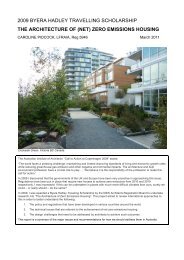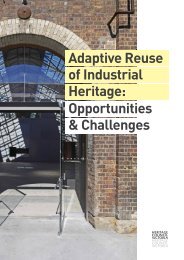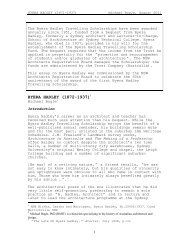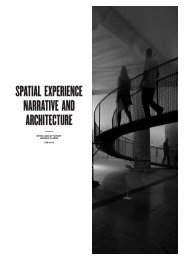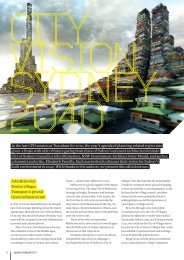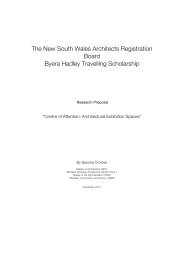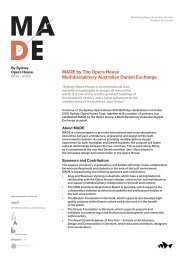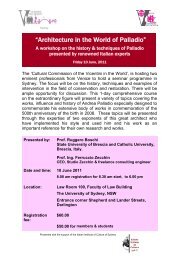4 unités LC - Architecture Insights
4 unités LC - Architecture Insights
4 unités LC - Architecture Insights
You also want an ePaper? Increase the reach of your titles
YUMPU automatically turns print PDFs into web optimized ePapers that Google loves.
Introduction<br />
Singular / Plural<br />
The Unité d’habitation of Le Corbusier in Marseille is the most<br />
renowned post-war housing development in the world. Any book<br />
regarding Modern architecture or the history of housing and urban<br />
design would never fail to mention this project. But although so<br />
much has been written and re-written about this particular building<br />
over the years, the existence of three other such ‘Unité<br />
d’habitation’ buildings in France is consistently skimmed over, or<br />
even completely overlooked 1 – an odd occurrence seeing as the<br />
multiple construction of these blocks was one of the main<br />
principles of their design concept. 2<br />
In response to these two issues, this thesis draws together all four<br />
‘Unités’ in France and addresses them with equal importance. The<br />
‘Unité d’habitation’ of Marseille was indeed the prototype for all<br />
other subsequently constructed ‘Unités’, it was the first and the<br />
original ‘Unité d’habitation’, but that is not to say that its history is<br />
any richer than any of the others. Each ‘Unité’ was constructed<br />
under its own unique circumstances, in towns of highly varied<br />
origins and locations around France. The four ‘Unités’ have<br />
experienced their own histories and stories, of which the<br />
documentation has proved to provide interesting points of contrast<br />
and correlation.<br />
Past / Present<br />
Varied accounts of the ‘Unité’ (again, mainly of Marseille, as the<br />
presence of the others is consistently overlooked) may be found<br />
over the years. Robert Hughes, for example, would have us believe<br />
that the building once found itself in a depressing and desolate<br />
state, full of pathos for the grand and ‘radiant’ vision it fell so<br />
evidently short of –<br />
11 12<br />
“Today the pool [on the roof] is cracked, the gymnasium closed<br />
(some optimist tried to resurrect it as a disco, which naturally<br />
failed), and the [running] track littered with broken concrete and<br />
tangles of rusty scaffolding. …In the raking light of an early<br />
Mediterranean morning, it has a heroic sadness…” 3 (published<br />
1980)<br />
William J R Curtis, however, paints a much more romantic picture of<br />
the ‘Unité’ as place offering its residents an appealingly idle<br />
Mediterranean lifestyle –<br />
“It is interesting to visit the Unité …in the evening in the<br />
autumn… People flood in from work and school, leaving their<br />
cars under the trees; they dawdle by the banks of cypresses, or<br />
play tennis, or shop in the upper street. On the roof terrace old<br />
men chat, catching the last afternoon sun while their<br />
grandchildren splash in the pool… The Unité takes a patiently<br />
worked out urban theorem and renders it in the terminology of a<br />
Mediterranean dream.” 4 (published 1986)<br />
So what is the current state of the ‘Unité d’habitation’, not only in<br />
Marseille, but equally of the other three in France? How have their<br />
lives developed over the years, and what changes have they and<br />
the towns in which they are sited undergone? For it is now nearly<br />
half a century since their construction, and not only are there<br />
variations to be noted between each ‘Unité’, but equally with in<br />
their own past and present.<br />
For as Le Corbusier said in his Poème de l’angle droit, “To make<br />
architecture is to make a creature,” 5 as architecture too has a life.<br />
Once it is brought into existence, it changes and evolves, as does<br />
the environment surrounding it. <strong>Architecture</strong> is in a continual state<br />
of transition and flux. It can only be considered ‘finished’ when it<br />
no longer exists.





